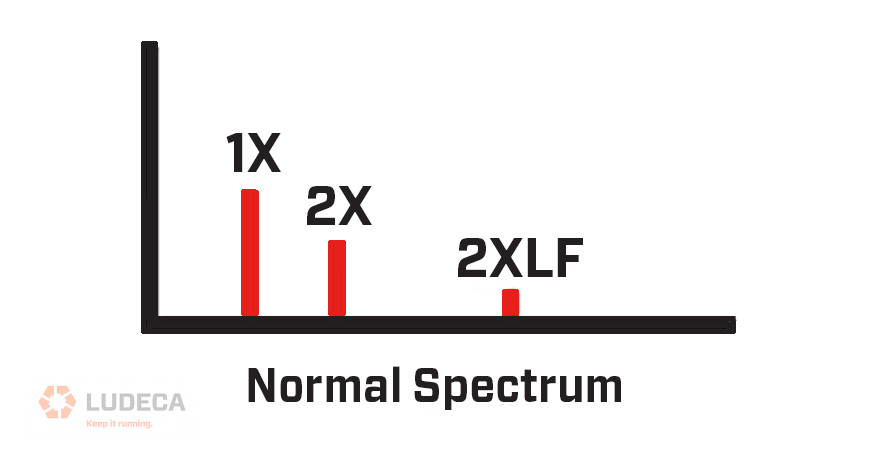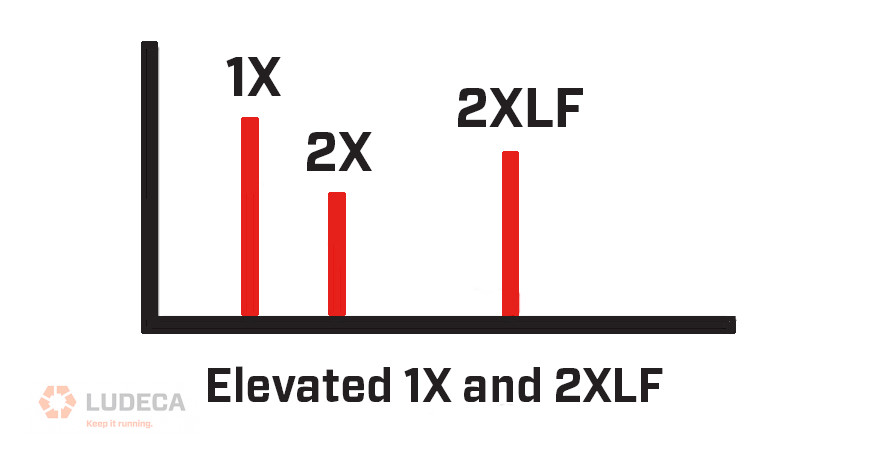All electric motors can develop electrical and mechanical problems over time in operation. One common failure mode is caused by the motor’s stator being eccentric. Stator eccentricity problems will produce an elevated peak at the two times the electrical line frequency (2×LF) which in the United States is 120 Hz (7200 CPM.)

The root of the problem is excessive stator eccentricity which results in an uneven air gap between the rotor and the stator.
For induction motors, this eccentricity shouldn’t exceed 5% and for synchronous motors, it should not exceed 10%. All electric motors will produce some vibration at the 2×LF, however, it is recommended that the cause of an elevated 2×LF peak be investigated for amplitudes exceeding 0.1 in/s peak for motors that are already in service.
There is another cause which is mechanical in nature which also produces increased amplitudes at the 2×LF and is commonly known as “Soft foot”. The existence of a soft foot condition in a motor will cause the frame to become distorted when the foot bolts are tightened and will ultimately lead to premature bearing failure.

A machine is determined to have a soft foot condition if the machine frame deflects by more than 0.002″ – 0.003″ when any machine foot is tightened or loosened while the other machine feet remain tight. This deflection produces an internal misalignment of the bearing bores, leading to shaft deflection, and will greatly increase the radial loading on the bearings, which in turn will lead to premature wear and failure.
Fortunately, the procedure for checking for soft foot is easy to perform using modern laser alignment systems and feeler gauges. Another method for checking soft foot on a motor that has been placed back in service and cannot be shut down is called a running soft foot check.
The first step to performing this check is to utilize a vibration analyzer that can stream data live. This is a feature certain vibration analyzers have which allows the user to continuously monitor the vibration spectrum while the machine is running.
CAUTION – This procedure requires “Extreme Caution”* since loosening a foot will most likely affect the shaft alignment. It is critical that only the foot being checked be loosened while all remaining machine feet remain tight. *See important note below
While the vibration analyst monitors the live vibration spectrum, one foot at a time is loosened (always with the other feet tight!) and then retightened. The best way to accomplish this check is to have a coworker loosen and then retighten each machine foot as the vibration analyst monitors the vibration spectrum. This process is then repeated until each of the machine feet has been checked.
The user will usually see a significant drop in the 2×LF amplitude and will also notice a change in the sound of the motor once the problem foot (or feet) have been loosened.
*Important Note: We mention this procedure for informational purposes since the practice is not uncommon throughout the industry. However, LUDECA does not advocate for this procedure given the safety risks involved.
Q&A Webinar: Detecting Misalignment using Vibration Analysis
Filed under:
Vibration Analysis by Dave Leach CRL CMRT CMRP
